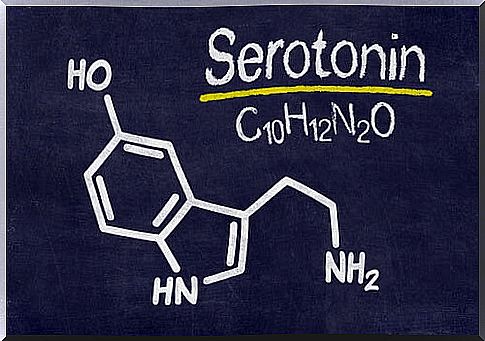Neurobiology Of Anxiety

We know that one of the disorders that most affect the population is anxiety. In addition, in Spain we are almost leaders in Europe in consumption of anxiolytics per person. But what is the neurobiology of anxiety?
Anxiety is related to the anticipation of future, indefinable and unforeseeable dangers (1). One of its main characteristics is that it is anticipatory, that is, it has the ability to foresee or point out the danger or threat to the individual himself, giving it an important functional value.
Studies in animals, primarily rodents, have identified specific brain areas associated with anxiety. It appears that the amygdala, prefrontal cortex, thalamus, and hippocampus are integral parts of the mediation of pathological and adaptive fear responses (2). We also have other clues, indicated by neuroimaging and pharmacological studies, that point the way to understanding the neurobiology of anxiety.

The amygdala
The area of the brain responsible for the acquisition and expression of fear conditioning is the amygdala (3). This is located within the medial temporal lobe and is made up of about 13 nuclei. Three of these nuclei are involved in the fear response pathways, that is, in anxiety (4). These are:
- The basal tonsil (AB).
- The lateral tonsil (AL).
- The central nuclei.
Projections from the amygdala target neurohumoral, autonomic, and musculoskeletal systems associated with anxiety and fear response mechanisms (5).
In addition, the amygdala functions as a regulatory center. In it, exteroceptive and interoceptive information is evaluated, giving rise to visceral and behavioral alarm responses (6).
The locus coeruleus
It is located on the bridge near the fourth ventricle. It is the main nucleus that contains norepinephrine in the brain. Thus, its action is regulated by:
- GABA-benzodiazepine and serotonergic receptors with inhibitory effect.
- The vasoactive intestinal peptide (VIP).
- Corticotropin releasing factor.
- Substance P.
- Acetylcholine, with activating effect.
It is an alert center in the brain. Thus, it is activated when a threat is detected in the body.
Thalamus
The thalamus is located in the center of the diencephalon. When there is a dangerous situation, the thalamus relays sensory signals to the amygdala. In fact, when this structure is injured, there is no expected fear reaction to an acoustic stimulus.
Hypothalamus
It is a complex of nuclei and is also the second component of the diencephalon. It is involved in sympathetic activation and the release of some substances that have to do with stress.
Periaqueductal gray matter
This structure is related to the response to fear. If, for example, we are facing an imminent danger such as an animal attack, the lateral periaqueductal gray matter will emit a defensive behavior. Faced with less danger, the ventrolateral periaqueductal substance grus pathway causes “freezing” behavior (6).
Hippocampus
The hippocampal system has connections with limbic structures and cortical sensory areas. It has a high density of 5HT-1A receptors and is believed to play an important role in anxiety.

Orbitofrontal cortex
This structure plays an important role in the interpretation of emotionally significant events. Thus, it selects and plans the response behavior to a threat, as well as monitors the effectiveness of those responses (5).
Neurotransmitters involved in the neurobiology of anxiety
Noradrenaline
A substance that acts as a neurotransmitter. Norepinephrine also stimulates a part of the nervous system called the sympathetic nervous system. Some anxiety symptoms, such as sweating, flushing, and trembling are mediated by the activation of peripheral beta-adrenergic receptors, which receive the signals from norepinephrine and epinephrine.
Serotonin
Although the role of serotonin in anxiety is not yet clear, it is known that it may have something to do with:
- Panic disorder
- Obsessive-compulsive disorder.
- The therapeutic effectiveness of serotonin reuptake inhibitors.

GABA
Gamma-aminobutyric acid (GABA) plays a very important role in the functioning of the central nervous system. On the other hand, benzodiazepines used in the treatment of anxiety enhance the activity of this neurotransmitter.
Thus, many parts of the brain are involved in anxiety disorders. Knowing them will help us to carry out more effective interventions and to understand a little better the functioning of brain dynamics.









